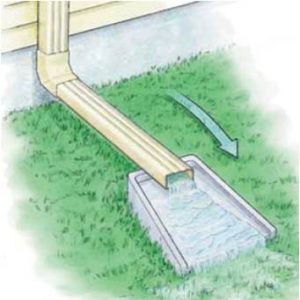Downspouts
One of the best practices you can do to help manage stormwater on your property is to disconnect your downspout* and divert the water off your roof and gutter to a rain garden, rain barrel, or your existing landscaping.
Downspout disconnection keeps excess water out of the storm system. During a heavy storm, each downspout on your home can deliver as much as 12 gallons a minute to your community’s storm system, which can consist of storm sewers and roadside ditches. All this excess water entering the storm system can cause flooding and streambank erosion.
Consider the following before disconnecting your downspouts:
- Do you have a natural area or lawn that the water can flow safely across and not cause water to flow onto your neighbor's property?
- Can you have the downspout outlet direct water at least 2 feet from your basement or a foundation wall so you do not cause water problems at your own house?
- You should use a splash block or other erosion control measures at the end of the downspout to ensure the water is distributed as sheet flow away from the building.
- Water from downspouts should not flow onto a street or sidewalks where it can create icy conditions.
* Some communities have regulations about how or where you can disconnect your downspout, so be sure to check your local codes.
This downspout disconnection manual from the City of Portland, Oregon shows you the simple steps and explains why this form of stormwater management is more than just disconnection.





